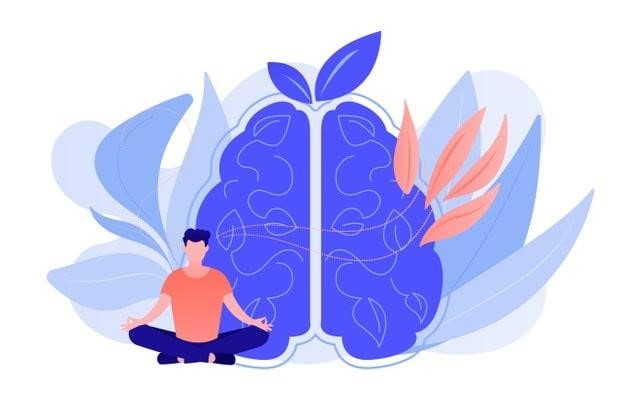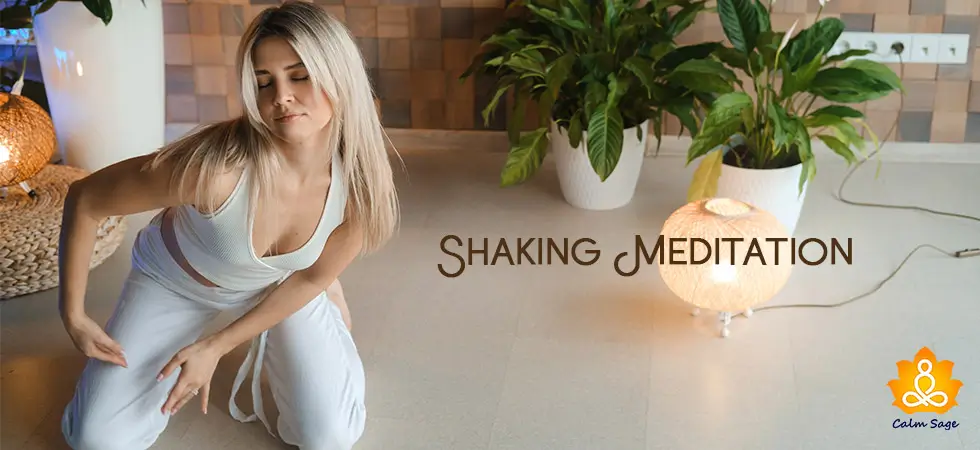Kundalini Meditation: What Is It, How To Practice It, & Its Benefits

“Time creates history. Meditation creates the moment.” – Ma Jaya Sati Bhagavati
We have dormant energy inside us, lying in wait to be untapped and liberated. Many of us forget that we can release that energy and unleash our self-awareness. Kundalini yoga or meditation can help you release your energy and make you stop living on ‘auto-pilot’.
In this chaotic and stressful world, we often do things without being aware of what we are doing. Most of the time, our actions, thoughts, and behavior are involuntary – we are not in the moment and not aware of our surroundings.
Kundalini Meditation can help you live your life with awareness and with purpose. This mediation aims to channel your energy that is living untapped in your body, release stress, and make you more self-aware.
This energy that I’m talking about is located at the base of our spine and is powerful. Awakening this energy takes practice and concentration but this energy can bring you to awareness and bliss. So let’s begin with learning what is kundalini meditation and how to practice it.
Also Read: Learn To Love & Heal Your Soul With Guided Meditation
An Overview Of Kundalini Meditation

The origin of Kundalini meditation isn’t exactly known but the earliest known mention dates back to The Upanishads approximately around 1,000 – 500 BC. Kundalini, in Sanskrit, translates to “coiled snake” and the historical texts say that a person carries primal energy on the base of their spine and this meditation seeks to release this energy.
This meditation practice is a wonderful way to develop self-awareness, mindfulness and release stress.
This meditation is based on the concept that the energy located in the root chakra (the base of the spine) needs to be released through the rest of the chakras and out through Sahasrara (crown chakra – located above the head). Kundalini meditation is a way for extracting energy that lives inside you to help you strengthen the mind-body connection.
Kundalini Meditation is about cleansing your mind after either a stressful day, managing stress, or counteract fatigue. It also aids you in balancing your energy and calms your mind enough to help you act intentionally, with a purpose, instead of going through the motions.
Kundalini Meditation For Beginners: How To Practice It
To practice kundalini meditation, follow these simple steps. If you’re a beginner then it is recommended that you start slow and small. You should avoid trying to do too much, too fast. It would feel overwhelming in the beginning but giving 5-10 minutes to practice kundalini meditation can help.
1. Get Ready

The first thing you need to do is pick a location where you can practice mediation. For kundalini meditation, you need a quiet, distraction-free place where you can feel comfortable and know that you will not be disturbed. Wear comfortable clothes with colors that radiate lightness.
The other thing which is imperative to keep in mind is; when to practice meditation. You can practice the first thing in the morning or you could practice at night. It is, however, recommended that you avoid meditation after a meal.
Time – how long are you willing to give to kundalini meditation – is also important. If you’re a beginner, you can start by practicing 5-10 minutes every day and gradually increase your time when you’ve reached a commitment.
2. Train Your Mind

This meditation is all about cleansing your mind so to do that your mind must be trained to listen to you and not the other way around. For a beginner, it might take time, patience, and dedication to train your mind but after a while, it’ll be easy to do it. Gradually, you’ll get used to the process.
3. Sit In The Correct Position

Your posture, while meditating, is as important as anything else involved. Sit on the floor with a soft rug or pillow underneath to help you maintain a straight posture. Sitting in a cross-legged position is recommended but you can sit in a way that you feel more comfortable in. Remember to not let your legs loose. You need to sit in a position that aligns your chakras – from root to crown.
After finding a comfortable position, close your eyes gently but not fully.
4. Choose Your ‘Kundalini Mantra’
Chanting a mantra will help you focus on the present moment. You can choose to chant silently (in your mind), out loud, or in a whisper. The chant you pick can be anything – a phrase or a sound – but whatever you choose, it should feel right to you.
Chanting a mantra helps you direct your energy and it makes you feel aware of yourself and what you’re doing at the moment. This mantra can help you restore your focus in distressing events as well.
Also Read: Music Meditation: How To Meditate With Music
5. Focus On Your Breathing

The next step requires you to focus on your breathing. Pay close attention to your breathing. You can practice the 4-7-8 breathing technique or other deep breathing exercises. As you practice breathing and chanting, let your mind focus on how each breath you’re taking is moving through your body and is affecting you.
If you’re getting distracted at any moment during the meditation, deliberately focus on your breath and the mantra you’re chanting.
Breathing should be the focus of your meditation. Complete the meditation with a deep inhale, raising your arms in the air, and relaxing on your exhale. You can gradually increase the time of your meditation. It’ll be a little difficult to do at first but with practice and dedication, you’ll be able to do more.
Benefits Of Kundalini Meditation
- Increase concentration power and prevent unnecessary/distracting thoughts
- Break out of your ‘going-through-the-motion’ routine and increase mindfulness
- Balance your mind, body, and spirit
- Increase creativity
- Increase awareness of yourself and your body
- Improve your emotional wellness
- Reduce anxiety
- Release stress and gain mental peace
- Improve cognitive skills
- Improve sleep
- Improve deep breathing
There are many benefits of practicing kundalini meditation. Kundalini meditation can help you:
Kundalini meditation, apart from these benefits, can help manage symptoms of or treat conditions such as:
-
- Depression
- Phobias
- Sleep or sleep-related disorders
- Obsessive-compulsive disorder
- Addictions
- Grief & Loss
- Trauma
Final Thoughts…
Practicing kundalini meditation might take time but remember to take small steps in the beginning. Including meditation in your chaotic and stressful routine isn’t easy, I know but once you get used to it – it becomes easier.
Calming your mind takes practice and dedication but even a few minutes of quiet can help. Once you’ve grasped how to meditate, kundalini meditation will be easier to practice.
Kundalini meditation is about gaining awareness of your actions, behaviors, and thoughts. Rather than going through the motions of life, with this meditation, you can learn to control your thoughts and actions with heightened awareness, purpose, and outlook.
“Meditation – Before you learn how to meditate, you must unlearn what you think meditation might be.” – Idries Shah
Breathe in, breathe out – relax.




















